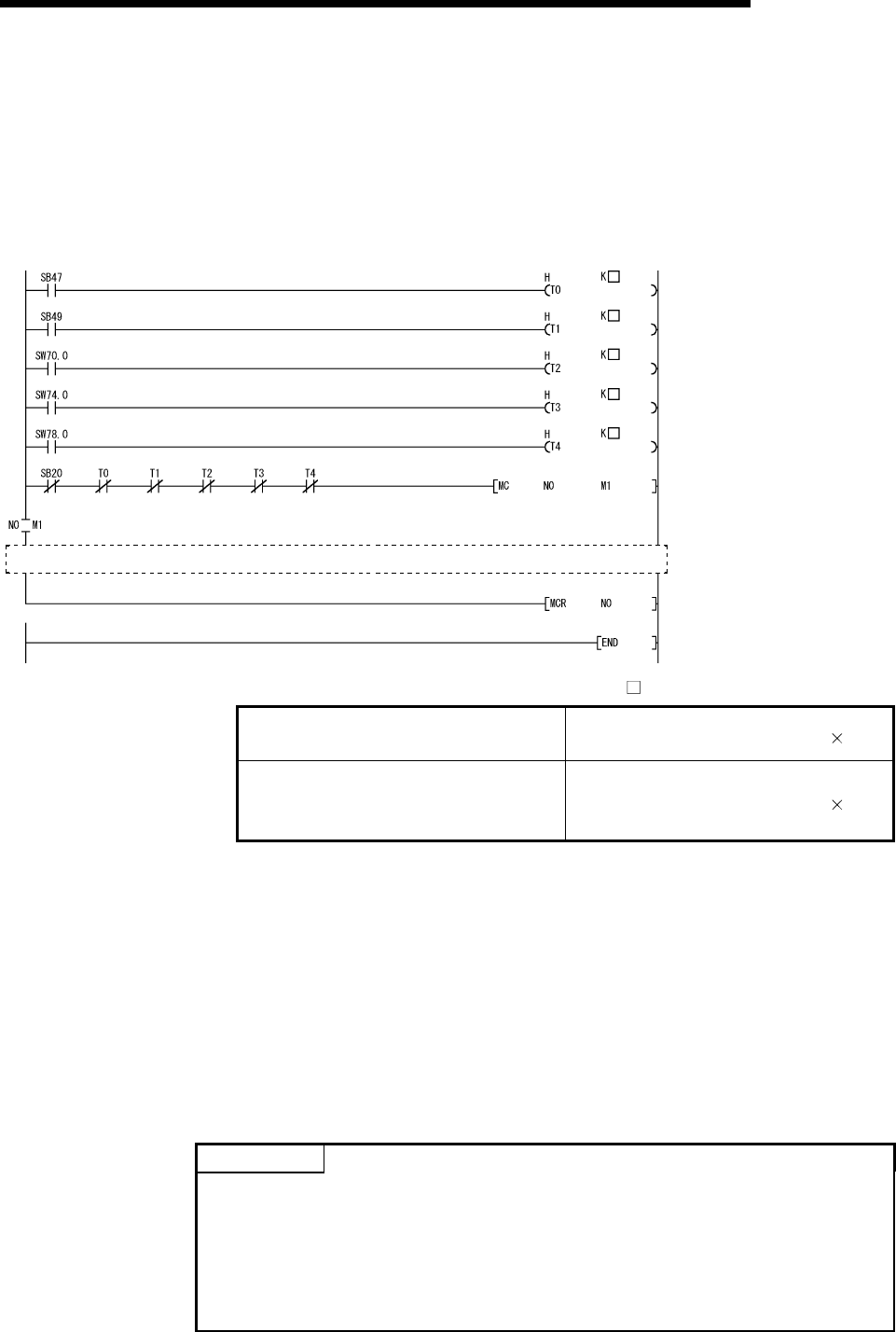
App. - 33 App. - 33
MELSEC-Q
APPENDIX
(2) Program example for interlocking the remote master station and
remote I/O station
Interlocks should be applied to the programs according to the link status of the
remote master station (host station) and remote I/O station (other station).
The following example shows an interlock in the communication program that
uses the link status (SB47, SB49) of the remote master station and the link status
(SW70 bit 0, SW74 bit 0, SW78 bit 0) of the remote I/O station (Station No. 1).
Sample programs (Refer to Appendix 9.2 and later)
SB47: Baton pass status of host
SB49: Data link status of host
SW70: Baton pass status of other station
SW74: Data link status of other station
SW78: Parameter communication
status of other station
SB20: Network module status
Set the following values for the timer constant K .
Baton pass status
(T0, T2)
More than (sequence scan time
4)
Cyclic transmission status
Parameter communication status
(T1, T3, T4)
More than (sequence scan time
3)
Reason: This way the control is not stopped even if the network detects an
instantaneous error due to a faulty cable condition and noise
interference.
Also, the multipliers of 4 and 3 should only be considered as a
guideline.
(3) REMFR/REMTO instruction
Perform programming so that the next instruction is executed after the
REMFR/REMTO instruction is executed and then completed.
The completion of the REMFR/REMTO instruction can be confirmed by the
completion device.
POINT
(1) After the execution of the REMFR/REMTO instruction, several scans are
required before the read/write of the actual data is completed.
(2) For the interlock program for the remote master station and remote I/O station
of the MELSECNET/H and details of the REMFR/REMTO instruction, refer to
the "Q Corresponding MELSECNET/H Network System Reference Manual
(Remote I/O Network)".


















